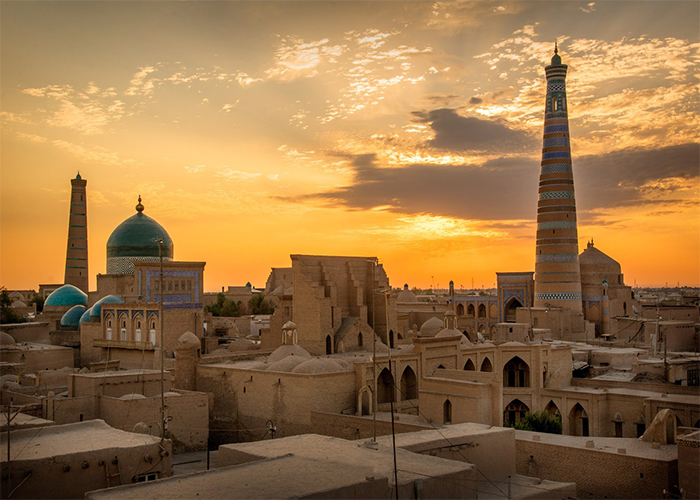Ichan Khala The cities of Central Asia are traditionally divided into two, as in Khiva: the inner city-Ichan-kala (Shahristan) and the outer city-Dishan-kala (rabod). The mysterious city of Khiva has managed to preserve the exotic image of the Orient within the ancient Ichan-kala, where many architectural monuments are located. Since 1967, Khiva has become the only architectural collection in the Islamic world with its status as a museum city. . The former city, made up of thieves and slave traders, was made a heartless city by Soviet rule. Today, however, the Khivaites are cautiously returning to the Ichan fortress, as if they had just woken up from a bad dream, while traditional construction work continues. Tourists and wedding ceremonies can exceed the number of local families - 2,000 of the 40,000 people living in Khiva live inside Ichan Castle. The heart of the museum, Ichan Qala, seems like a rock of the time. When you wake up when there are no cars in its center and the modern infrastructure is out of sight, you take to the streets and witness the ancient view of the real Khiva. The inner city occupies an area of about 30 acres and has a rectangular shape. Khiva was located on the borders of Ichan-kala in the XVI and XVII centuries and reached a height of 8-10 m, surrounded by a strong mud wall, the parts of which were 6-8 m thick and more than 2200 m long. The strong walls of Ichan-kala provided reliable protection for the city of Khiva. At the top of the wall was a hollow and turret lanceolate gallery, and the gate (gates) were located in the center of the Ichan-kala walls. While the current gates look as historic as the walls, the gates you see today were rebuilt in the 19th and 20th centuries. West-Ata-Gate on Kunya-Arki (Khan's Fortress), North-Garden-Gate on the Urgench road, East-Palvan-Gate on the Khazarasp and Amu Darya rivers, South-Tash-Gate on the Karaum sand located. The Ata-Darvaza gate was destroyed in 1020 and rebuilt in the 1970s. Today, guests enter through the West Ata Gate (main gate). All the gates protect the city from harmful rains, nomadic raids, and desert storms. From the North Garden Gate to the corner of the Ark, you can walk along the city walls. The historical center of Khiva, in particular the Ichan-Kala fortress, is included in the UNESCO World Heritage List. There are significant parts of architectural monuments: khan palaces, mosques, madrasas, mausoleums, minarets. The main part of Khiva monuments was built in the XVIII and XIX centuries. At that time, the Khorezm oasis had a unique architectural style, which was mainly characterized by wood, marble, and alabaster plaster carvings. For this reason, a number of buildings in Khiva are distinguished by their intricate decorative styles that cover their columns, arches, walls, domed ceilings, and doors. Ichan-kala, which retains the complexity of its small streets and narrow alleys typical of ancient Eastern cities, is of considerable importance. As for the outer city of Dishan-kala, it is a belt of developed settlements around Ichan-kala, which was also connected with fortifications in the past. The legend of Ichan Castle According to archeological data, Khiva existed as a station or caravanserai in Heyvak (Khiva / Heyva / Heyvak) on the ancient route from Merv to Gurganj in the V-VI centuries. Therefore, archaeologists believe that the remains of ancient fortifications around the caravanserai were partly the basis of the walls of the Ichan-kala, which dates back to the V century. It is said that the water of the well of Hayvak, which had an amazing taste, was dug by the Bible by Sim, the son of Noah.


